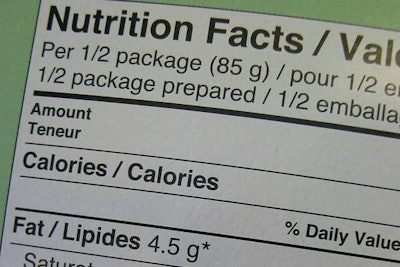
As mentioned in my previous column (Petfood Industry magazine, April 2015), the revisions to the Association of American Feed Control Officials (AAFCO) dog and cat food nutrient profiles are almost complete, and assuming its final form is approved by AAFCO in August 2015, it should appear in the 2016 Official Publication. While there is expected to be a grace period for enforcement to allow for a smooth transition, now is not too soon to begin considering the effect these changes will have on product formulations. Clearly, the revisions to the calcium and phosphorus requirements will have the greatest potential impact on existing pet food (particularly dog food) products, as previously discussed. This column explores other changes to the profiles that may also affect pet food formulations.
The dry matter nutrient values for dog food are to be based on the presumption of 4000 kilocalories metabolizable energy per kilogram of food, rather than 3500 as it is currently. However, the necessary adjustment for high-energy diets will still kick in at 4000 kcal ME/kg DM. So, there no longer will be any leeway for any products that are close to, but not quite at or below the presumed energy density. Dog foods at or below 4000 kcal ME/kg DM will need to be formulated using the dry matter table, but anything greater will have to be adjusted for energy density (e.g., use of the calorie-based table).
Also, a new stipulation states that for low-energy foods (presumably anything <4000?), meeting the profiles alone is insufficient proof of nutritional adequacy for reproduction (gestation/lactation). I interpret that to mean any product intended for more than growth and maintenance (i.e., for gestation/lactation specifically or for all life stages) will be required to be at least 4000 kcal ME/kg DM or must be substantiated by means other than meeting the profiles (e.g., successful passage of a feeding trial, meeting the Product Family criteria).
The dry matter nutrient values for cat foods remain based on the presumption of 4000 kcal ME/kg DM, but the necessary adjustment for high-energy diets has dropped from 4500 to 4000 kcal ME/kg DM. Therefore, adjustment for energy density will be the same as will be required for dog foods. Also, in accordance with the stipulation for "low-energy " cat foods, any cat food intended for more than adult maintenance (i.e., for growth, gestation/lactation or all life stages) will need to meet or exceed 4000 kcal ME/kg DM or must be substantiated by other means.
The crude fat requirement for dog foods will increase from 8.0% DM to 8.5% DM for growth and reproduction, and from 5.0% DM to 5.5% DM for adult maintenance. The requirement for linoleic acid (LA) will increase from 1.0% DM for all dogs to 1.1% DM for maintenance and 1.3% DM for growth and reproduction. The crude fat and arachidonic acid (AA) requirements for cat foods will remain unchanged (9.0% and 0.02% DM, respectively), while the requirement for linoleic acid for all cats will increase from 0.5% DM to 0.6% DM.
Brand new to the profiles for both dog and cat foods will be values for alpha-linolenic acid (ALA) and eicosapentaenoic and docosahexaenoic acids in combination (EPA/DHA) for growth and reproduction. While the values for adult maintenance will be left as "ND" (i.e., "not determined"), this action will effectively recognize these specific omega-3 fatty acids as dietary essential nutrients regardless of life stage. Therefore, when guarantees are made, their placement in the guaranteed analysis would need to follow the order of the profiles; i.e., below moisture (or ash, if declared) or immediately after any guaranteed amino acids. In other words, neither ALA nor EPA/DHA would have to be listed below all essential nutrients and asterisked leading to the "not recognized as essential" disclaimer. However, for more general guarantees (e.g., "omega-3 fatty acids"), those still must be listed last and asterisked as they do now.
Although specific numeric values for ALA and EPA/DHA are not provided for adult maintenance for either dog or cat foods in the revised profiles, at least for dog foods one or the other of these fatty acids will still be required in the diet. Under the new profiles, the ratio of omega-6 fatty acids (LA + AA) to omega-3 fatty acids (ALA + EPA + DHA) cannot be greater than 30:1. In other words, an adult maintenance dog food containing the minimum required amount of LA (1.1% DM) and no AA must contain at least 0.0367% DM of any combination of ALA, EPA and DHA.
The crude protein requirement for dog foods intended for growth and reproduction will increase slightly from 22.0% DM to 22.5% DM, while that required for maintenance will remain at 18% DM. The crude protein requirements for cat foods will remain the same at 30% DM and 26% DM for growth and reproduction and adult maintenance, respectively.
Many but not all of the amino acid requirements for dog foods will increase—some by only a tweak, others more substantially. Also added to the profiles for dog foods will be new requirements for methionine and phenylalanine as separate nutrients, not only in combination with other amino acids (cystine and tyrosine, respectively). For cat foods, some amino acid requirements will increase, while some will decrease and others remain the same. A new requirement will be a maximum allowed percentage for tryptophan (1.7% DM).
For dog foods intended for growth and reproduction, the requirements for magnesium, copper, manganese and selenium will increase, while those for iron, zinc and iodine will decrease. For maintenance dog foods, the requirements will increase for sodium, chloride, magnesium and selenium, and will decrease for iron, zinc and iodine. The maximum allowed for iodine will decrease, while the current maximums for magnesium, iron, copper and zinc will be eliminated. For cat foods for either maintenance or growth and reproduction, a slight increase will be seen for manganese, with more substantive increases for both iodine and selenium. The minimum copper level in canned cat foods intended for growth and reproduction will also go up, but the maximum for zinc will be eliminated.
The minimum fat-soluble vitamin requirements for dog foods will remain the same, but the levels of water-soluble vitamins and choline will all increase. However, the maximum for vitamin D in dog foods will be lowered from 5000 IU/kg DM to 3000 IU/kg DM, and the maximum for vitamin E eliminated. For cat foods, the minimum requirements for both vitamins A and D will be lowered, while the requirement for vitamin E will rise from 30 IU/kg DM to 40 IU/kg DM. The maximum vitamin A in cat foods will be cut in more than half, though the maximum for vitamin D will triple. For vitamin K, choline, taurine and, except for a slight increase in thiamine, all other water-soluble vitamins, the minimums will remain the same.
AAFCO pet food nutrient profiles, part 1
Further petfood insights:
Find more columns by Dr. Dzanis at www.petfoodindustry.com/petfoodinsights.aspx.



















